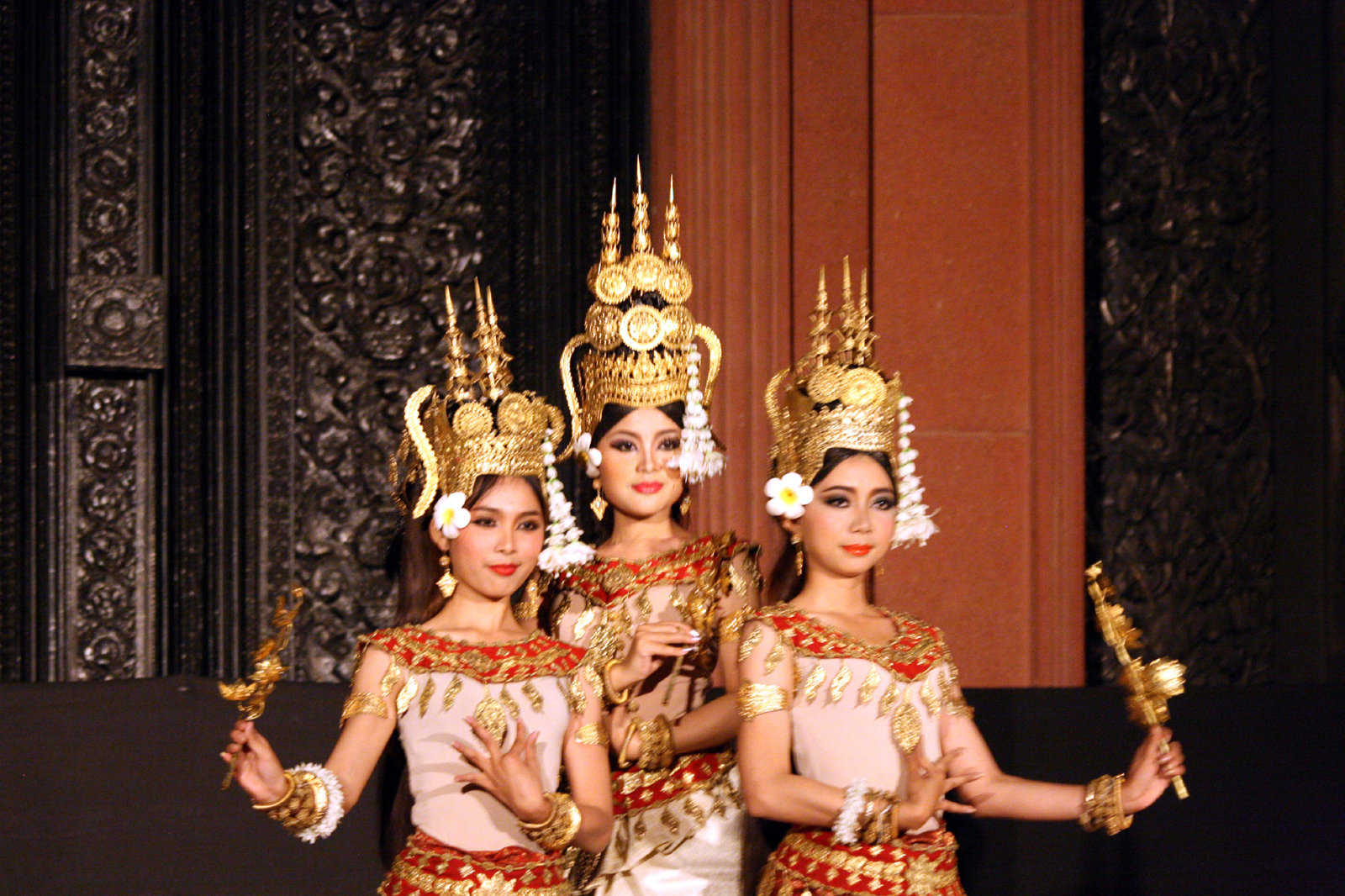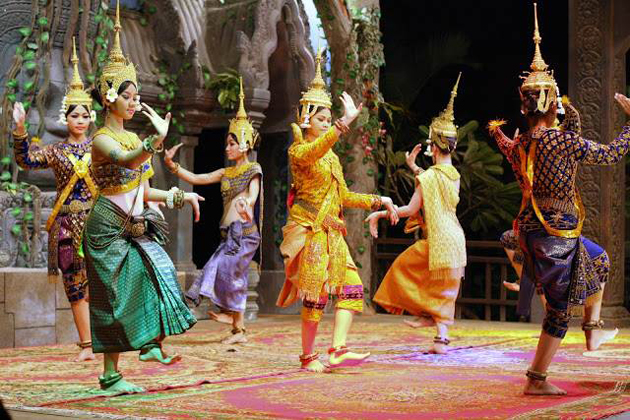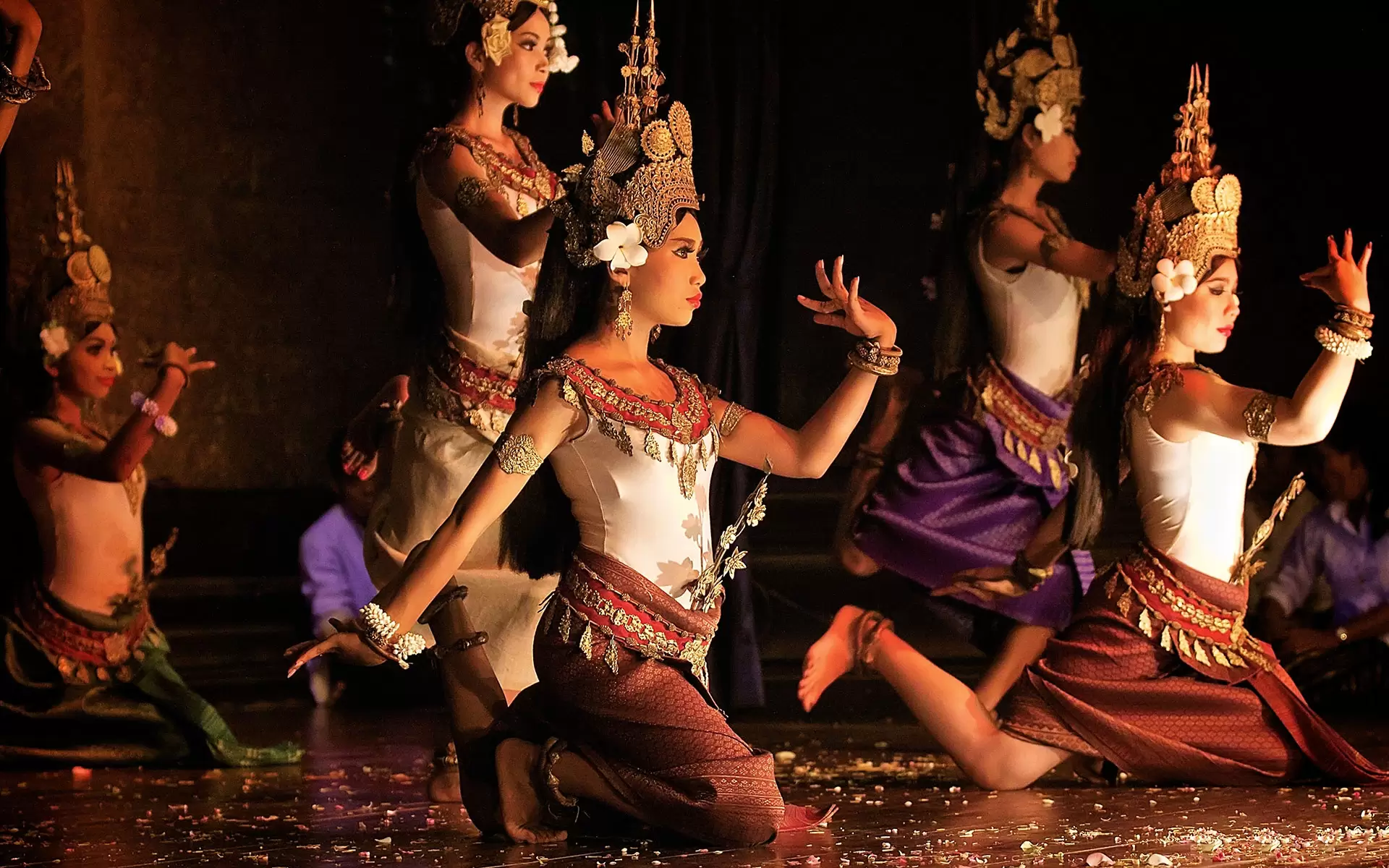Exploring the Enchanting World of Cambodian Traditional Dance
Nestled in the heart of Southeast Asia, Cambodia beckons travelers with its magnetic blend of history, culture, and unrivaled charm. It’s a nation where time-honored traditions hold sway over modernity, and nowhere is this timeless allure more evident than in the mesmerizing art of Cambodian traditional dance performances. In this captivating travel blog, Green Sun Travel invites you to embark on an enchanting journey into the realm of Cambodian dance performances, where grace, elegance, and the resounding echoes of centuries-old stories resurface on the grand stage.
The Rich History of Cambodian Traditional Dance
To understand the enchanting world of Cambodian traditional dance performances, one must delve into its rich and ancient history, a tapestry interwoven with the rise and fall of the majestic Khmer Empire. This art form’s roots dig deep into the fertile soil of Hindu mythology and the spiritual teachings of Buddhism, painting vivid stories of gods, heroes, and legends.
As the Khmer Empire flourished from the 9th to the 15th century, so too did the art of Cambodian dance. It became an integral part of religious ceremonies, royal court performances, and epic storytelling. Dancers were not merely entertainers; they were vessels through which the nation’s cultural heritage flowed.
Despite enduring the turbulent tides of history, including the dark era of the Khmer Rouge, Cambodian dance miraculously survived. It emerged from the shadows, resilient and vibrant, determined to safeguard the nation’s soul in the form of graceful movements and elaborate costumes. Through the ages, it has become a living testament to Cambodia’s unwavering commitment to preserving its heritage.
Intricate hand gestures, known as “mudras,” and elaborate costumes tell stories that transcend spoken words. Each dance reflects a deep connection to Cambodia’s spiritual and cultural past, a bridge that links the present to the glory days of the Khmer Empire.
The Venues for Cambodian traditional dance

The Royal Palace in Phnom Penh
As you venture into Cambodia’s bustling capital city, Phnom Penh, you’ll have the opportunity to witness the mesmerizing Apsara Dance Troupe at the iconic Royal Palace.. The Royal Palace, a striking architectural masterpiece, is a historical gem in itself, and it provides the perfect backdrop for the ethereal performances that take place within its hallowed walls.
The Apsara Dance Troupe, known for its skilled dancers, presents classical Cambodian dance forms with a level of grace and precision that is truly awe-inspiring. The dancers adorn themselves in vibrant, ornate costumes that shimmer in the soft glow of the palace’s ambient lighting. Elaborate headdresses, adorned with delicate jewels, complete their regal attire. Every movement, every step, every gesture is meticulously choreographed, making it a mesmerizing visual spectacle that transports you to another era.
As you sit in the serene surroundings of the Royal Palace, you’ll find yourself captivated by the stories that unfold through the dancers’ movements. The Apsara dance, in particular, embodies the epitome of feminine elegance, with its portrayal of celestial nymphs from Hindu mythology. The intricate hand gestures, or “mudras,” add depth and meaning to each performance, creating a profound connection to Cambodia’s cultural and spiritual heritage.
Angkor Village Theatre in Siem Reap
In the enchanting city of Siem Reap, where the awe-inspiring temples of Angkor Wat beckon travelers from around the world, the Angkor Village Theatre offers a unique opportunity to immerse yourself in Cambodian traditional dance. After a day of exploring the magnificent Angkor temples, this theater provides the perfect setting to unwind and be transported into the world of classical dance.
At the Angkor Village Theatre, you can savor traditional performances while indulging in a sumptuous dining experience. The elegant setting complements the artistry on display, creating an evening that seamlessly blends culture, cuisine, and entertainment.
This venue serves as an ideal way to cap off your temple exploration, allowing you to absorb the cultural richness of Cambodia while relishing the flavors of its cuisine. The synergy of the dance and dining experience is a testament to Cambodia’s commitment to preserving its traditions and sharing them with the world.
Forms of Cambodian Traditional Dance
Apsara Dance

The Apsara dance, often regarded as the crown jewel of Cambodian traditional dance, is a captivating and exquisite art form that brings to life the celestial nymphs from Hindu mythology. Each performance is a mesmerizing journey into the realm of grace, beauty, and elegance. The dancers, meticulously selected and trained for their exceptional skills, are adorned in resplendent costumes that mirror the celestial splendor of Apsaras.
As the dance unfolds, spectators are transported to a world where every movement seems to defy gravity. Dancers glide with ethereal grace, their feet barely touching the ground, creating an illusion of weightlessness. The precision and fluidity of their movements are nothing short of breathtaking, evoking a sense of otherworldly charm.
What sets the Apsara dance apart is the intricate language of hand gestures known as “mudras.” These mudras are not mere aesthetic elements but integral components of the storytelling. Each gesture carries specific meanings, allowing the dancers to communicate complex narratives without uttering a single word. It’s a language of the body, a silent dialogue between the performers and the audience.
The Apsara dance is a visual feast, where the vibrancy of the costumes, the ethereal movements of the dancers, and the storytelling prowess of the performers converge to create an unforgettable experience. It is a celebration of femininity, beauty, and the timeless allure of Cambodian culture.
Robam Tep Apsara
Robam Tep Apsara is a variant of the Apsara dance that places the spotlight on the exquisite beauty of the celestial nymphs. In this intimate solo dance form, a single dancer takes center stage, captivating the audience with their grace and charm. The dancer is adorned in elaborate costumes and ornaments that highlight the celestial qualities of the Apsara.
As the dancer gracefully moves, every gesture and step is carefully choreographed to narrate stories from Cambodian mythology. The audience is drawn into the performer’s world, forming a deeper connection with the artistry on display. It’s an opportunity to appreciate the dancer’s storytelling skills up close and personal, immersing oneself in the beauty and elegance of the Apsara.
Robam Moni Mekhala
Robam Moni Mekhala is a dance form that unveils the epic tale of Mekhala, a benevolent goddess, and Ream Eyso, a demon king. The narrative revolves around their timeless battle for control of the oceans. In this performance, the artistic skill and emotional depth of Cambodian dancers shine brightly.
Through elaborate choreography and intricate movements, the dancers embody the characters of Mekhala and Ream Eyso, infusing the story with emotion and drama. The dance serves as a testament to the storytelling prowess of Cambodian artists, who use their bodies as vessels to convey complex narratives deeply rooted in mythology and folklore.
Lakhon Khol
Lakhon Khol is a unique form of masked dance-drama that draws inspiration from the ancient Indian epic, the Ramayana. This performance is characterized by the colorful masks worn by the performers, each mask representing a specific character from the epic.
The dance-drama is a mesmerizing blend of intricate choreography, vibrant costumes, and traditional music. It serves as a captivating and culturally significant art form that resonates with both historical and spiritual themes. Lakhon Khol provides a window into the profound influence of Indian culture on Cambodian arts, offering a unique perspective on the interconnectedness of cultures in the region.
In experiencing these diverse forms of Cambodian traditional dance, travelers not only witness stunning artistic performances but also gain a deeper appreciation for the rich cultural tapestry that has been meticulously preserved and cherished throughout Cambodia’s history. Each dance form is a testament to the nation’s enduring commitment to celebrating its heritage and sharing its stories with the world.
Conclusion
A visit to Cambodia would be incomplete without immersing yourself in the world of Cambodian traditional dance performances. These performances not only entertain but also provide a window into Cambodia’s rich history and culture. So, when you find yourself in the Land of the Khmer, make sure to witness the grace and elegance of Cambodian traditional dance, a truly unforgettable experience that will leave you enchanted and inspired. Cambodia’s traditional dance is a celebration of its past, an expression of its present, and a gift to all who appreciate the beauty of its culture.







